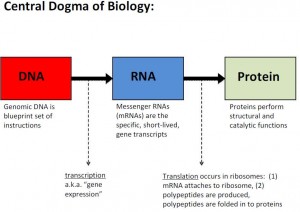(Note: This post was composed in March 2014 but somehow never got published) No environmental measurement is arguably more critical to understanding the indoor environmental factors relevant to the presence of fungi or the potential survival of infectious airborne agents than the moisture measurements. Characterization of the presence of moisture on surfaces, also known as …
Bill Walsh of The Healthy Building Network has posted a story on the subject,”the Dirt on Antimicrobials” that covers the health effects concerns from the chemicals themselves but does not address the currently popular subject of the health harm or benefits from the presence of and exposures to the multitude of microbes in, on, and …
“Susceptibility of green and conventional building materials to microbial growth” Indoor Air journal, accepted for publication Abstract Green building materials are becoming more popular. However, little is known about their ability to support or limit microbial growth. The growth of fungi was evaluated on five building materials. Two green, two conventional building materials and wood …
One of the unmet challenges to the Sloan Foundation’s Microbiology of the Built Environment (MoBE) program is the sharing of the results of the Foundation-funded studies as well as other studies of the indoor and built environment microbiome. At the American Society for Microbiology’s annual conference in Boston last week, I was impressed by Pieter …
UPDATE 1 by Jonathan Eisen on May 18, 2014. I have flagged this post as being offensive (see comments for more detail). The author has now lost his permission to post directly without screening and am considering deleting this post (due to the tone of this post and other posts). I am for now leaving it up …
“In 2010, Americans were prescribed 258 million courses of antibiotics, a rate of 833 per thousand people. Such massive usage, billions of doses, has been going on year after year.” or so says Martin Blaser who has written a book (“Missing Microbes: How the Overuse of Antibiotics is Fueling Our Modern Plagues” published by Macmillan …
Registrants for the March AAAS Symposium are recipients today of the following message from Anette Olsen at AAAS. “I’d like to let you know that the videos of each panel is now online, but they currently remain unedited. We anticipate another two weeks before the edited versions are placed online. In the meantime, here is …
In November, 2012, Curtis Huttenhower began work (with funding from the Sloan Foundation) to examine the transmission of human-associated microbes by public transportation surfaces. An article on “Big Data” in the current issue of Harvard Magazine includes a description of Huttenhower’s work in the lead article “Why “Big Data” Is a Big Deal.” After very …
Yersinia pestis, Direct Fluorescent Antibody Stain (DFA), 200x Magnification. CDC 2057. Wikimedia Creative Commons Attribution 3.0 License. “Black death was not spread by rat fleas, say researchers” reported in the Guardian Reportedly it was “pneumonic” rather than “bubonic” as previously thought. Fortunately it was a very, very long time ago, although there have been many …
Jordan Peccia has posted the slides from his tutorial, Molecular methods for bioaerosol analysis on Slideshare. If you would like to get a quick overview of molecular-biology based methods, this is a painless, accessible way to do it. You are encouraged to post your comments and questions after you review the slideshow. We hope to …
